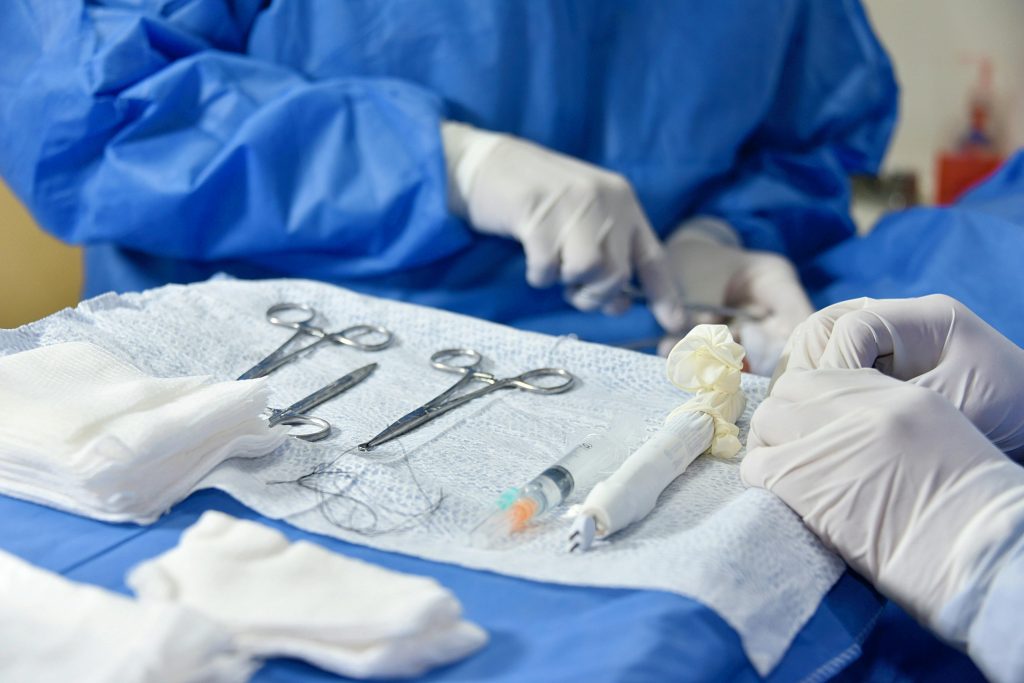
Disclaimer: This website provides health information for educational purposes only and is not a substitute for professional medical advice, diagnosis, or treatment. Always seek the guidance of a qualified healthcare provider with any questions you may have.
Total knee replacement surgery, also known as total knee arthroplasty, is a surgical procedure performed to alleviate chronic pain and restore function in individuals with severe knee arthritis. This article provides an in-depth overview of how total knee replacement is done, from pre-surgery preparation to post-operative care.
Anatomy of the Knee and Knee Arthritis
The knee joint is comprised of the tibia (shin bone), femur (thigh bone), and patella (kneecap). In knee arthritis, the cartilage that cushions the ends of these bones gradually wears away, leading to pain and irritation. This deterioration can make everyday activities challenging and significantly impact a person’s quality of life.

Top Reasons for Knee Replacement Surgery
- Severe Arthritis: The most common reason for knee replacement surgery is severe arthritis, which leads to debilitating pain, stiffness, and loss of function. When conservative treatments fail to provide adequate relief, knee replacement may be recommended to restore mobility and alleviate pain.
- Chronic Knee Pain: Persistent knee pain that interferes with daily activities such as walking, climbing stairs, or getting up from a chair can significantly impact quality of life. Knee replacement surgery offers a long-term solution to manage chronic pain and improve overall function.
- Limited Mobility: Arthritic changes in the knee joint can result in limited range of motion and difficulty performing routine movements. Knee replacement can help restore mobility, allowing individuals to engage in activities they enjoy and maintain independence.
- Joint Deformity: Severe arthritis can cause deformity or malalignment of the knee joint, leading to instability and further damage. Knee replacement surgery can correct these structural abnormalities, improving joint stability and alignment.
- Failed Conservative Treatments: When nonsurgical interventions such as medication, physical therapy, and injections fail to provide adequate relief, knee replacement surgery may be considered as a last resort option to address persistent symptoms and improve overall quality of life.
- Traumatic Injury: Traumatic injuries to the knee, such as fractures or ligament tears, may result in irreversible damage to the joint surfaces. In such cases, knee replacement surgery may be necessary to restore normal function and prevent long-term complications.
Total Knee Replacement Procedure
When arthritis affects the entire knee joint, total knee replacement surgery may be recommended. During this procedure, the damaged bone and cartilage are removed and replaced with prosthetic components to restore normal function and reduce pain.
Preparation for Surgery
Before the surgery begins, the patient is typically administered anesthesia to ensure they are comfortable and pain-free during the procedure. Once sedated, the surgical team prepares the operative site by cleaning and sterilizing the area to minimize the risk of infection.
Bone Preparation
The surgeon begins by using specialized guides to accurately remove the damaged bone from the femur and tibia. This meticulous process ensures that the implants will be the correct size and properly aligned for optimal function.
Placement of Prosthetic Components
Once the bone preparation is complete, the prosthetic components are meticulously placed. These components, made of durable materials like metal and plastic, mimic the natural anatomy of the knee joint and are designed to withstand the forces of movement.
Testing and Adjustment
After the implants are secured in place, the surgeon performs a series of tests to ensure proper sizing and alignment. Trial spacers may be used to assess knee stability and make any necessary adjustments before finalizing the procedure.
Patellar Preparation
In some cases, the patella may also be affected by arthritis and require intervention. The surgeon carefully prepares the patella to accept an implant, ensuring smooth movement and proper alignment with the other components of the mako knee replacement.
Final Implantation and Fixation
Once all components are properly positioned, bone cement is applied to the backs of the tibial, femoral, and patellar implants. This cement helps to secure the implants in place and provides stability during the healing process.
Completion of the Procedure
With the final implants in position and securely fixed, the surgical team completes the total knee replacement procedure. The incision site is closed, and the patient is transferred to a recovery area for post-operative care.
Recovery and Rehabilitation
Following total knee replacement surgery, patients undergo a period of recovery and rehabilitation to regain strength, mobility, and function in the affected knee. Physical therapy exercises, pain management strategies, and lifestyle modifications may be prescribed to support the healing process and optimize outcomes.
Conclusion
Total knee replacement surgery is a highly effective treatment option for individuals with severe knee arthritis. By replacing damaged joint surfaces with prosthetic components, this procedure can significantly reduce pain, improve mobility, and enhance overall quality of life for patients experiencing chronic knee problems. If you are considering knee replacement surgery, consult with a qualified orthopedic surgeon to explore your options and develop a personalized treatment plan tailored to your needs.